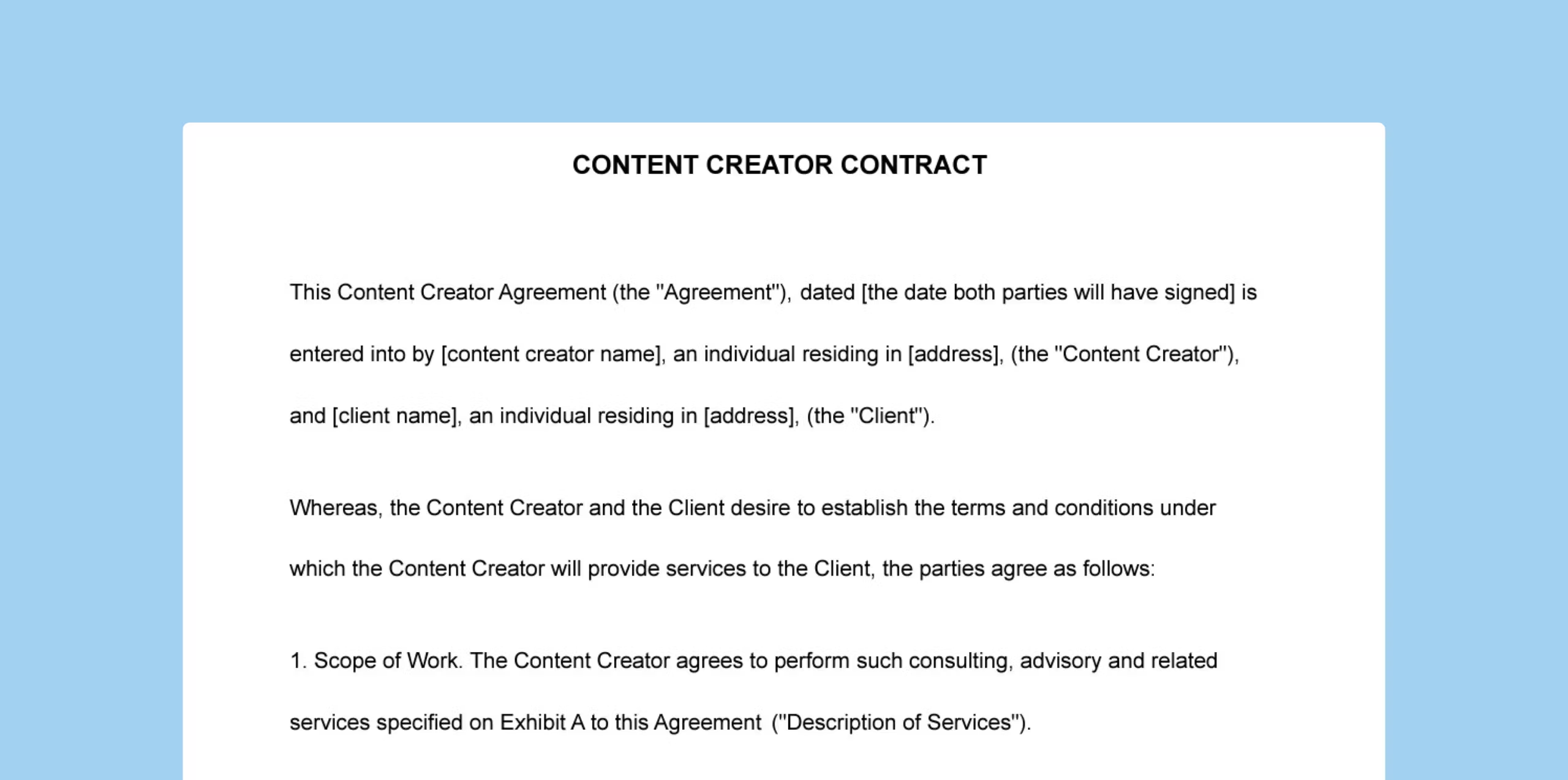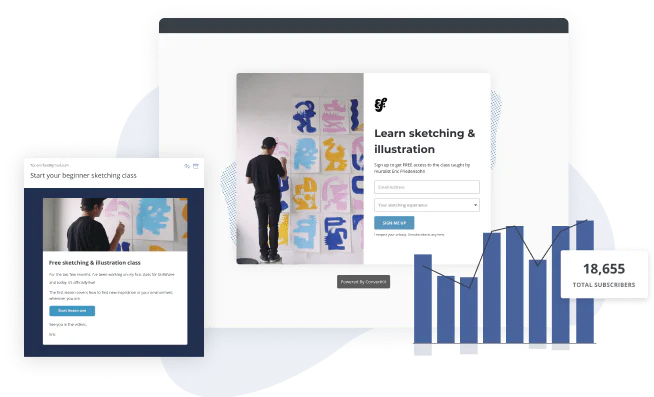In this Article
Ending a business relationship is always difficult—no matter how good your relationship is.
If you need help on how to end a business relationship, this article is for you.
We explore the most common signs that a collaboration—whether with sponsors, advertisers, or business partners—is due to end and walk you through how to conduct a business breakup professionally.
4 signs it might be time to end a business partnership
Brand collaborations can be exciting in the beginning—especially if they’re a new stream of income for you. For example, Author Mark Manson makes $10k-$15k a month from brand sponsorships, and his best-performing partnerships are often products he loves and uses.
Unfortunately, not every business partnership is smooth sailing.
Here are some signs that a sponsor or advertiser relationship may not be working and a few tips for improving each situation.
- You feel pushed to share content that doesn’t fit
- Communication is lacking on both sides
- Your contents’ value isn’t represented in your earnings
- Your creator business is evolving in a new direction
1. You feel pushed to share content that doesn’t fit
As a creator, you likely have a strong idea of what your audience enjoys and what you like to create. So, it can feel conflicting when a brand requests that you share content or promote products that aren’t aligned with your brand and audience’s interests.
It may be tempting to say “yes” even when your gut says “no.”
But creating content your audience doesn’t enjoy can alienate them and jeopardize your creator business.
It’s more important to prioritize the desires of your audience and the values of your own brand.
Sponsorship opportunities come and go, but your reputation is forever. A misaligned partnership can make you appear disingenuous to your subscribers and put them off.
Make sure you’re only partnering with brands on subjects you truly care about.
Tips to find the right partnership from the get-go
Avoid pangs of regret by finding and choosing brand-compatible partnerships from the beginning. These tips will help:
Be wary of mass emails from unfamiliar brands that don’t fit your audience
While it’s absolutely a good idea to start your brand sponsorship journey with smaller brands and businesses, don’t be afraid to decline sponsorship offers from random brands whose offerings don’t match your audience’s needs.
Although some mass emails may be relevant, the best collaborations often stem from direct pitches to brands because you’re in control of the proposal and can choose brands that will likely be a good fit.
Avoid making unnecessary exceptions
Creators with a smaller following are often tempted to collaborate with any brand—particularly popular ones. However, if a brand’s product or service doesn’t work for your audience or brand, it can negatively impact your business.
Your audience may view you as disingenuous, and your sponsored content will likely underperform, hurting your reputation with the sponsor. It’s a lose-lose situation.
Pitch brands you genuinely want to collaborate with
Don’t wait for the good-fit brands to reach out to you. Pitch them your sponsorship ideas. Taking the reins in this way increases your chances of landing relevant partnerships and will probably create better long-term, satisfying business relationships for you.
2. Communication is a big challenge
Much of your collaboration’s success rides on your communication. Whether that’s trading emails and phone calls with the brand’s marketing department, coordinating travel plans, explaining a project vision, or ensuring sponsored content meets the company’s legal guidelines.
With so many processes reliant on good communication, unclear, overbearing, or insufficient communication can quickly turn your dream sponsorship into a nightmare.
If you feel frustrated with your point of contact, it’s most likely because of the disconnect within your communication styles, which could signal it’s time to end the business relationship, especially if the frustration contributes to creator burnout.
Tips for better communication
Communicate your needs for effective collaboration
People communicate differently, so it might be helpful to kindly discuss your preferred methods of communication at the start of your partnership. For example, some creators share their working hours and gently inform clients that they don’t respond to business communication outside those hours. This sets the tone for future communication.
Discuss ways to improve communication
If you didn’t get a chance to set the tone at the start of your partnership, it’s not too late. Kindly discuss your communication challenges with your point of contact and share some ways to improve them.
Find out how they prefer to communicate, share your preferred style of communication, and try to reach a compromise. For example, if they prefer phone calls while you’d rather have asynchronous communication, they can send voice or screen recordings instead.
Be flexible but firm
Don’t compromise on your non-negotiables. While you may want to be more flexible for new brands you’re working with, it’s okay to express what works best for your own creative process.
Compromise should suit both parties, so you shouldn’t feel like you’re the only party constantly compromising and getting your boundaries violated.
Overall, it helps to remind your partners that clear communication is essential for a successful partnership—which you both want. It helps you produce high-value content, which benefits advertisers.
3. Your contents’ value isn’t reflected in earnings
If you started to work with a brand when you had fewer followers and readers than you have now, you may feel like a price increase needs to happen.
However, knowing how to communicate a price increase can be tricky. Still, it’s important to charge your worth. And since you are your own boss, no one but you will advocate or ask for a proper raise.
Also, when you don’t raise your rates, you may resent the work or be taken advantage of by your partners.
If you struggle to communicate a rate increase, remind yourself that you’ve earned it. Just think of all the knowledge and experience—and larger following—you’ve gained since you began as a creator.
The brand not only gets to connect with your new audience members, but you’ve probably added more internal or admin work to your process the more your brand has grown. There is more community interaction to handle and expenses that have been added to the projects.
Realizing that it’s perfectly reasonable to increase your rates can allay your fears about doing so. Also, most brands who value your work will be happy to pay your new rates.
Simple price increase letter you can copy
To summarize, if your audience has grown or you’ve added more experience, it’s time to email or schedule a call with your point of contact to talk about a price increase.
Before your palms start to sweat, think about how you’ll communicate the added value you’re providing and how that translates into your new rate. This will help you feel more confident when you make the request.
Here’s a simple price increase letter to help:
Hi [name of contact here],
I hope your week is off to a great start! [any additional personal details]
I wanted to check in today and talk about my new pricing structure for [type of sponsored content you provide] that will kick in at the end of this quarter.
After growing my audience to [number of followers or readers] and adding [new skill] to my skillset, I’m excited to bring even more value to the sponsored content I can provide for you.
I would love to continue collaborating together next quarter on [what you provide for them]. Any [type of service] we work on together until then will be at my current rate of $XXX.
Thank you so much, and I look forward to hearing from you soon!
[your signature sign-off],
[your name]
What to do if they’re not receptive to a price increase
This is the perfect opportunity to reassess what the collaboration is worth to you. Are you willing to continue working for the brand and producing content at the rate you’re at, or would you rather spend that time on other projects?
No one can decide what the best move for your brand is but you. If you need more time to decide, you can send them a quick reply saying…
“I really appreciate your transparency and honesty regarding my price increase. Do you mind if I take the next few days to consider your request before giving you my answer? I’ll be sure to contact you by [date here]. Thank you for your patience in advance.”
4. Your creator business is evolving in a new direction
Sometimes, it’s not them, it’s you. Creators and their businesses grow and evolve over time.
You might be changing your niche, taking a sabbatical, or even changing your major marketing channels. For example, according to our 2024 State of the Creator Economy Report, fewer creators are making short-form videos on social media; more are pivoting to longer-form content like newsletters.
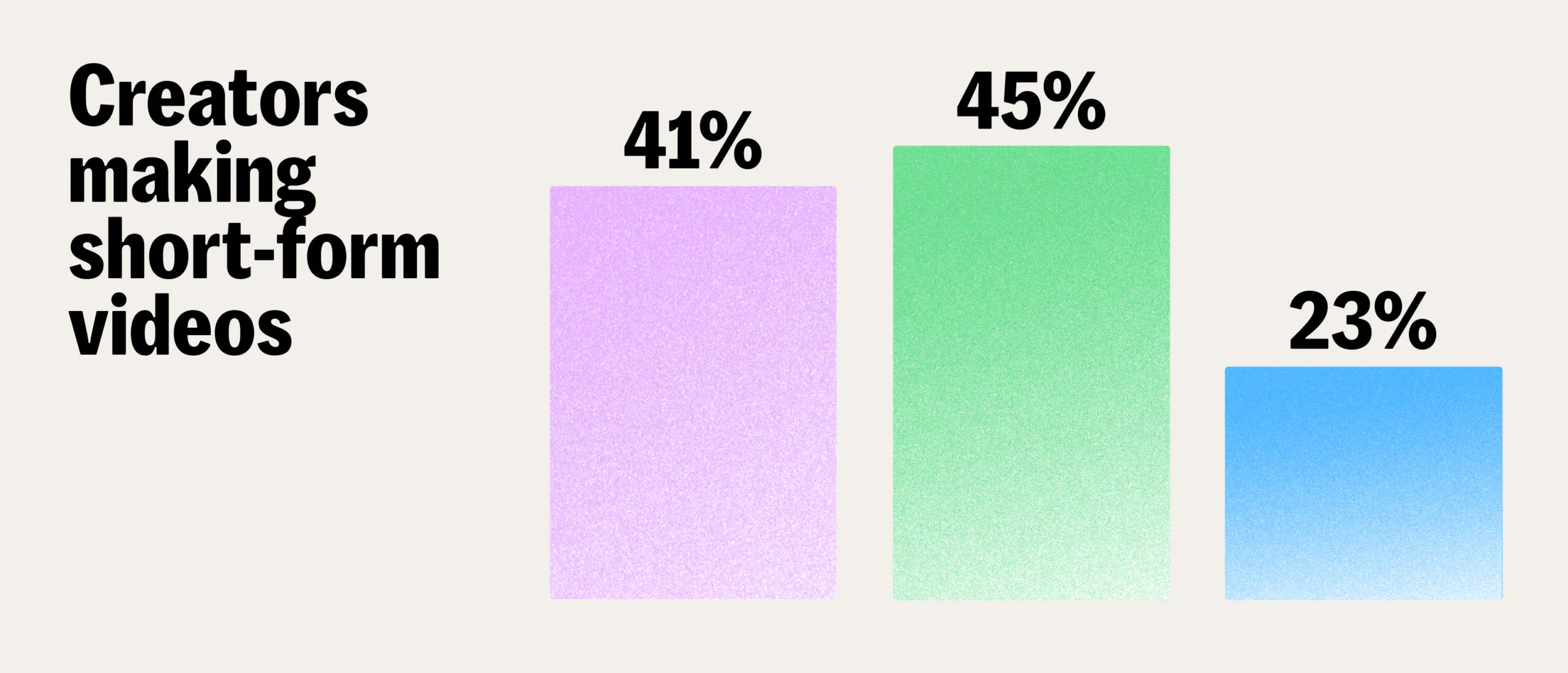
Fewer creators made short-form videos in 2023 than they did in 2021 and 2022
Whatever the reason, it’s normal to outgrow or evolve away from certain partnerships—even though you’ve cultivated rewarding relationships with your business partners.
It’s a bittersweet situation, and many creators can fall into the trap of holding onto outdated partnerships, which can impact their bottom line and mental health.
If you realize that your business has changed too much to continue a certain partnership, don’t be afraid to kindly and professionally initiate a business breakup.
Your advertisers will be grateful for your forthrightness, and your business will thrive with sponsors who better align with your current needs.
How to end a business relationship respectfully
Whether you’re sad to say goodbye or pulling a Taylor Swift as you sing, “We are never ever getting back together,” there are times when it’s best to end your working relationship with an advertiser or sponsor politely.
Here are a few ways to end a business partnership graciously:
Review the contract
Before you call your contact person to end the relationship, it’s wise to review the partnership contract and stipulated terms to ensure you’ve met all the obligations required. Look specifically at the contract termination terms to confirm how soon you can cut ties.
If you haven’t yet met all your obligations, decide whether or not you can make it work. If you need to break your contract ahead of time (which we strongly discourage), you may need to consult a lawyer to work out your options to avoid getting into serious legal trouble.
If you’re reading this thinking, “What contract?” it’s a good time to say we recommend using a contract as a creator before you start working on sponsored content.
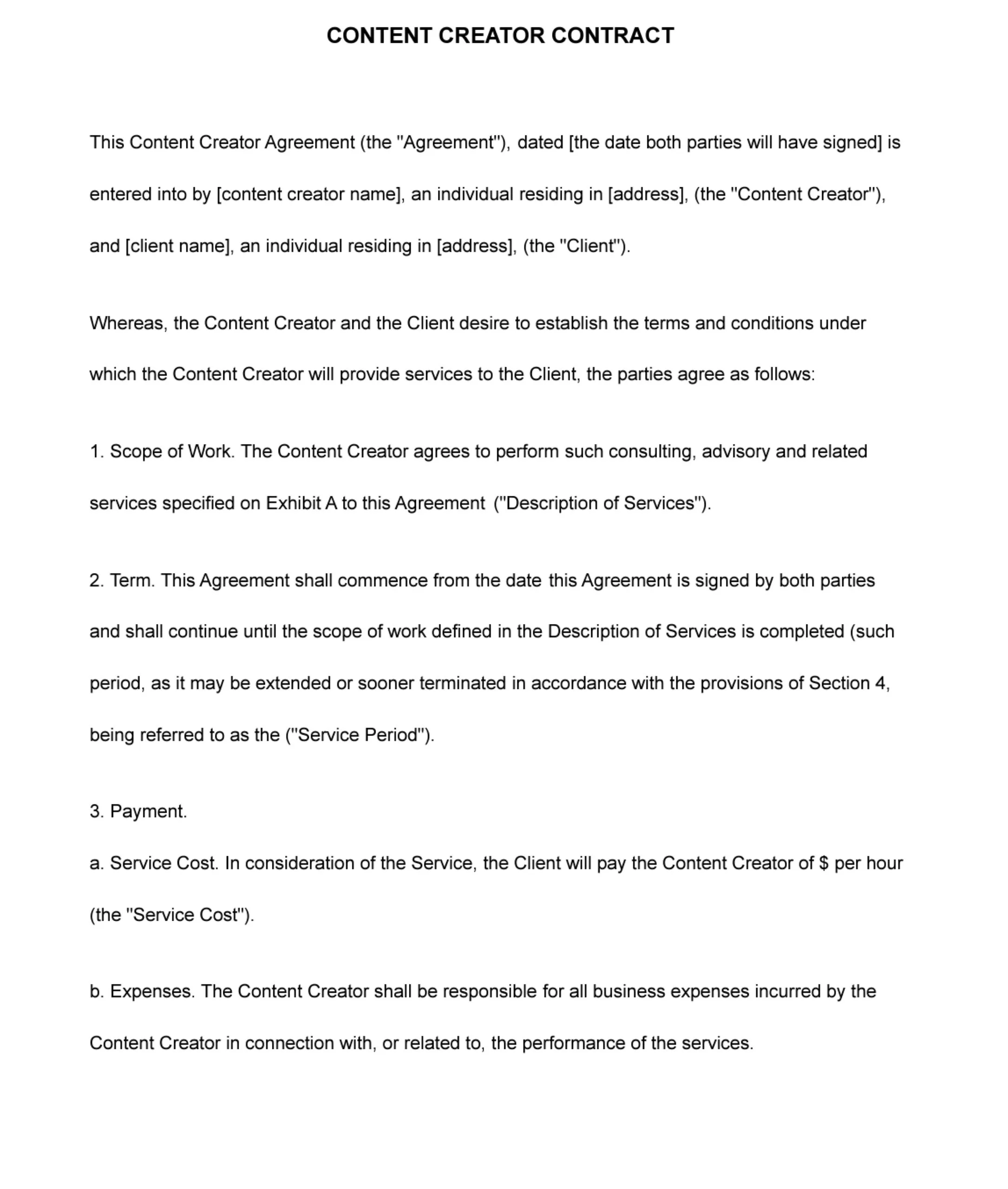
Contract template from Indy
Outline the reasons for ending the biz relationship
Breaking up—even only professionally—can be tough, particularly for the confrontation-averse. Still, it’s much better than ghosting your partners, which can burn all bridges and hurt your chances of working with that brand or other brands in your industry.
Take some time to think through what you’re going to say.
For example, list the reason(s) why the partnership is no longer a good fit for you and a few positive things about it so you have something good to say about working with your partners during the call to help keep the overall tone positive.
Then, schedule a call to share them with your contact person. If you have people-pleasing tendencies, it might also help to come up with potential responses in case your business partners try to persuade you to continue working with them so that you can stay on track.
Keep it professional and have a conversation
Stay professional throughout the conversation with your contact person. Use a kind, even tone, and highlight the good things about the working relationship and how much you appreciate the partnership.
After you’ve highlighted the positive takeaways of the collaboration, you can now discuss differences in communication or vision so they understand why you need to end the working relationship. Clarifying your reasons for ending the business relationship will make this step much easier for you.
If you have an idea of another creator who may be a good fit for their future projects, offer to make the introduction between them. This goes a long way in saying, “I know I may not have been a fit, but maybe my friend in the industry is.”
Where to find new brand collaboration opportunities as a creator
After letting go of one business relationship, you’re probably in the market for new collaborations.
Here are some tips for finding your next big brand partnership:
Sign up to the Creator Network
There’s power in having a network of like-minded creators to bounce ideas off or receive referrals from, which is why we built the Creator Network, a hub for creators who use Kit.
When you create a Creator Network profile, it’s easy to reach out to fellow creators for collaborations, ask them to recommend your newsletter in return for recommending theirs, or even find ways to work together by offering them a paid service or product.
And you can share your posts and products and recommend other creators’ newsletters on your profile page.
Setting up a profile is easy. If you’re not yet a Kit user, you can sign up on the Creator Network page. If you’re a Kit user, just go to your Kit dashboard and click Grow > Creator Profile.
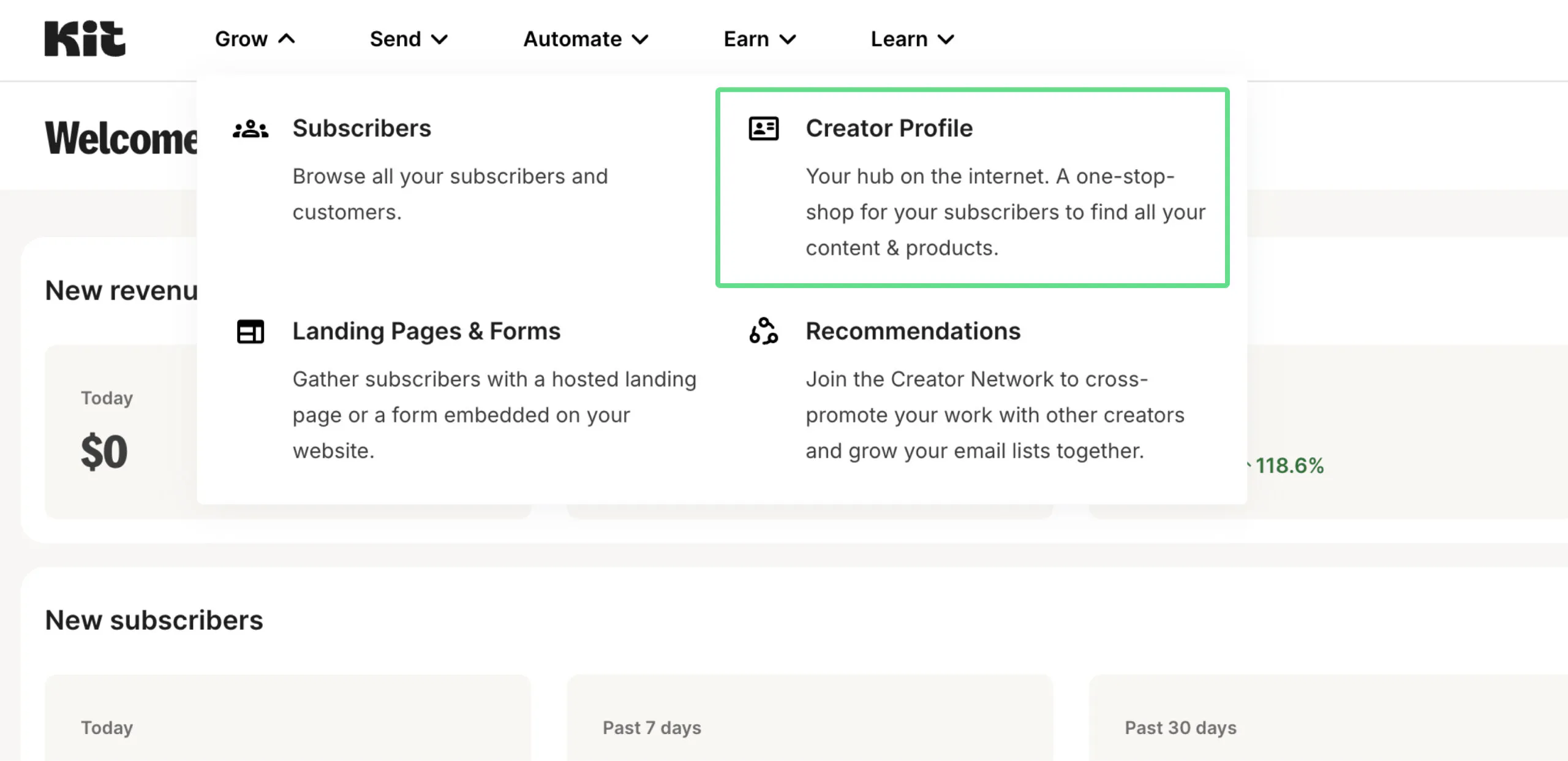
Build your Creator Network profile to connect with other creators
Unsure where to start with finding like-minded creators? Kit can even match you with creators in your niche to get the ball rolling.
Enroll in Kit’s Ads Network
Newsletter advertising is another low-effort way to generate more income. With Kit, you can handpick advertisers and brands to collaborate with and choose brands that align with your audience’s needs.
On your Kit dashboard, go to Earn > Ads and follow the instructions to set up ads. You’ll also get the chance to choose your preferred brands right away.
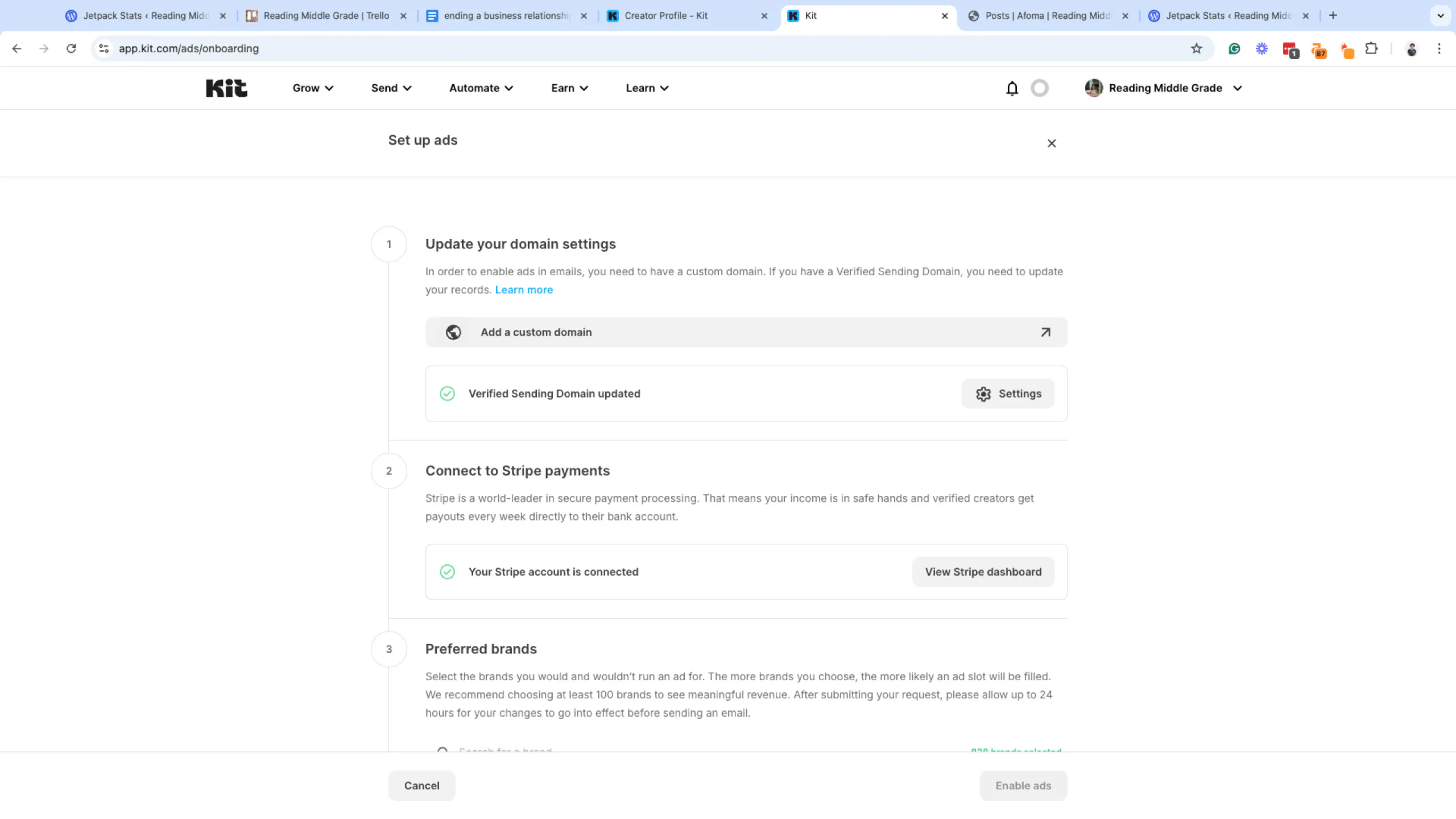
Set up newsletter ads with Kit
Join the Sponsor Network
Sponsor Network is for creators with at least 10,000 newsletter subscribers and sends consistently—at least once per week. Kit connects creators with premium advertisers who want to reach your audience.
Unlike running newsletter ads, individual sponsors exclusively promote their content in each edition of your newsletter.
The Kit team will handle all sales negotiations, reporting, and logistics so you can focus on creating for your audience—and raking in cash from sponsors who value your content.
Make room for the right kinds of business relationships
Losing a brand sponsorship or advertiser relationship can feel like a blow to your revenue, but if done thoughtfully, it can become a stepping stone to better opportunities that fit your audience’s needs.
With Kit, you’re never without options for forming profitable new business relationships. Sign up for your Kit account to start rebuilding your revenue.
